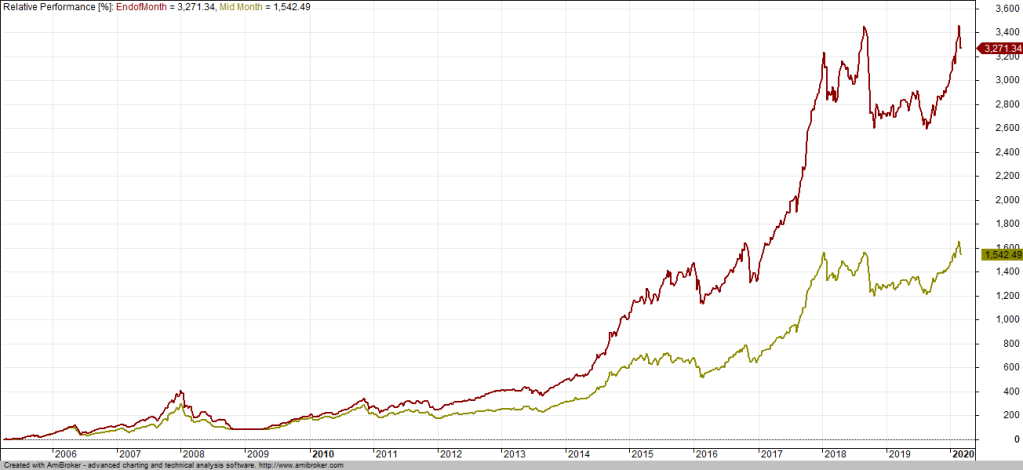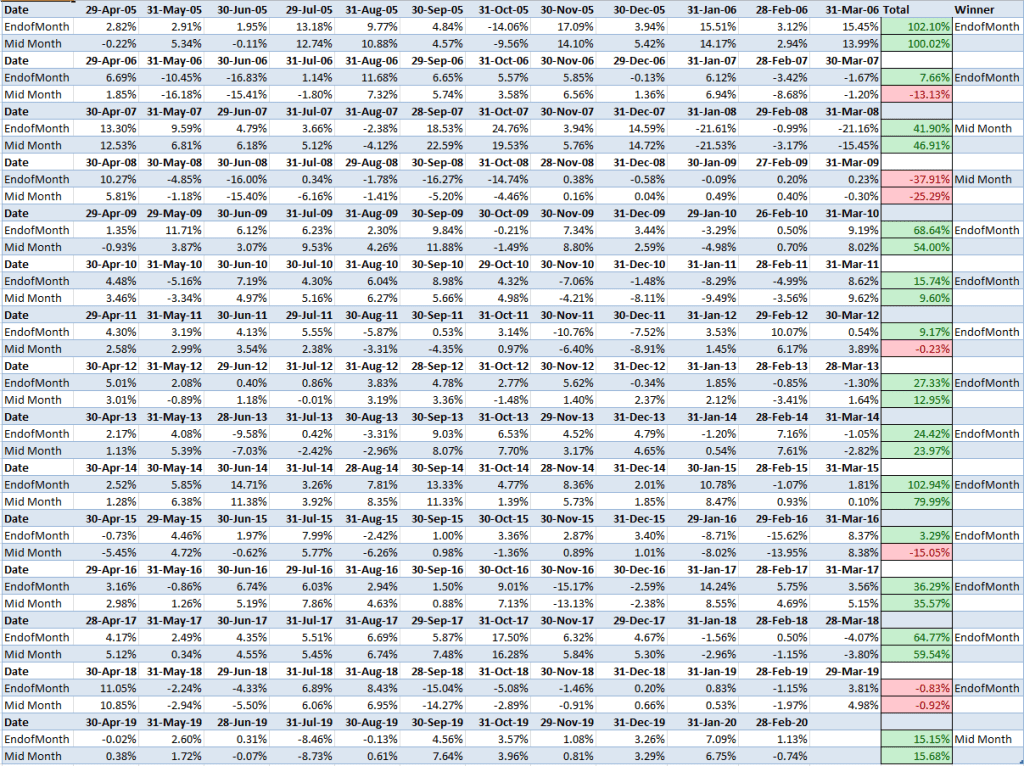Market Timing Luck – When should you Rebalance
Luck plays a large role in many a person’s life regardless of whether they choose to accept it or not starting right from the family they were born to. Luck is like the catalyst in a chemical reaction – small in proportion to the other chemicals out there but large in the role to play.
When one is building a trading system, one way to check out whether the trading system has real value is by subjecting the results of the back-test to Bootstrapping and Monte Carlo. This provides for one to analyze a system without being held hostage to its path dependency of the past.
Systematic Momentum investing has not gained much followership even though the majority of investors are in the camp of Momentum Investing. In Momentum Investing there is an element of luck that is introduced in various ways – one way that is of great interest to me ever since I started to focus on it has been around the question of when to rebalance one’s portfolio.
The best interval for rebalancing is for Daily with the worst being Yearly. This is because as close as you are to the daily changes, the better the ability to enter a stock as soon as it starts showing momentum and vice versa for exit.
On the other hand, the longer your holding time frame before rebalance, the higher the probability of mean reversion kicking in and eating a chunk of your returns before the reset happens. While there is no optimal time frame, higher transactions lead to higher levels of transactions and taxes.
I rotate my portfolio once a month. While academic evidence has pointed to monthly being a pretty optimal (not the most), the choice was dictated by other reasons including the fact that when I started with Momentum Investing, I was working with Capitalmind and there we already had a Qualitative Momentum strategy that rotated once a month.
There is a great deal of Literature around Timing Luck. To learn more about this, do read this post by Corey Hoffstein
The Dumb (Timing) Luck of Smart Beta
Also check out
Strategic Rebalancing
My own rebalance happens on the first day of the month. Idea has been to keep it simple and one that when I was working synchronized with my Salary being credited enabling me to add to the portfolio if I so wished.
It shall be in a few days 3 years since I started and the results while not fantastic has been way better than what I could have achieved by investing in any other Long only product. That was until March 2020.
When the Corona Virus first started making news, I tried to study the possible impact on markets given my own large exposure to them. From what I could study about previous epidemics,I figured that the worst case scenario was one that I could digest without having to deviate from my current plan and strategy. Man, was I wrong.
As a trader before and investor today, losing money I have understood is part and parcel of the process. What I wish to understand more was whether the path I had chosen had hidden risks that got exposed in such times. In case of Momentum Investing, the question was whether my performance would have been better if I had stuck to a mid month rebalance vs a start of the month rebalance.
While I have thought about going down to Weekly, I have found little evidence of it having a better risk management for the additional trouble and costs I need to pay. Same goes for a fortnightly rebalance as well. In hindsight, the only way I could have saved a lot of grief this time around without panicking and exiting my portfolio was by way of buying Puts. But given how much of the markets which is where my portfolio comes from had deviated from Nifty, this would have cost me in the last two years even as the portfolio had suffered.
March 2020 was different though. I calculated that if I had rebalanced (not exited) the portfolio at the middle of the month, I could have saved a whopping 10% vs what I lost by rebalancing at the end of the month.
But was this a one off or does rebalancing mid month does add value {Remember, the time period difference between two rebalances continues to be a month} was what I wanted to test and hence I set out to test the strategy of rebalancing mid-month.
When I got the results, it blew me off. It’s not that the mid-month was better, it’s just how bad that was and how Lucky I was to have chosen a start of the month rebalance instead. Here is the over-all comparison on a Net Asset Value basis

I broke this down in monthly terms

What I find fascinating is that the mid-month strategy works better in bear markets than in bull, but because in the last 15 years, the testing period, bull markets have been the dominating factor, small differences have added to a substantial outperformance.
The question that needs to be asked is Why? Why does a mid-month rebalance suffer so much versus a beginning of the month rebalance. The honest answer is I don’t know but I do think, rather, I can speculate that this may have something to do with how large investors deploy.
To me, this fall has been more educative with the cost much more bearable than all the other market crashes I had participated in the past (going right back to the Dot Com bubble crash). The answers I come across confound my own beliefs, but that is why one needs to keep testing alternatives so as to be sure that one is not mistaking good luck for great strategy. It’s a real thin line out there in the world of finance.
End Note: We are starting to build some Momentum in the Slack Channel. It’s a network effect and hence should take more time to build the environment that enables people to share and discuss views and strategies, but believe we will be there.




Recent Comments